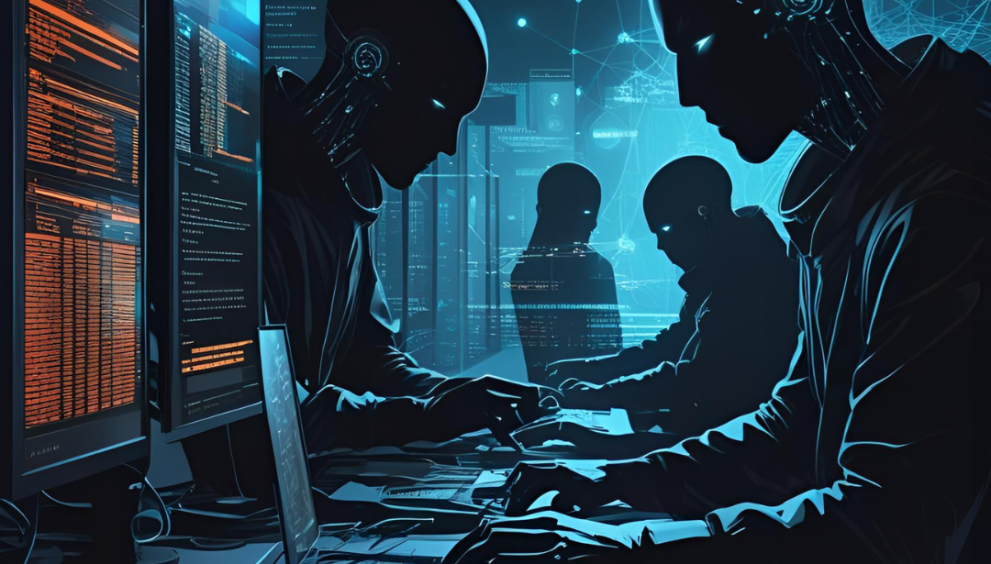In 2025, deepfake AI has gone from a geeky novelty to a mainstream tool for cyber-criminals. Hyper-realistic fake videos, images and voices are becoming increasingly cheap and easy to create and difficult to distinguish from genuine ones, which is particularly dangerous in the current day and age.
This toxic mix is also driving record-setting deepfake cybercrime losses: North American fraud facilitated by synthetic media soared 1,740% from 2022 to 2023 and racked up damages of more than $200 million in Q1 2025 alone.
As generative models continue to get better, the line between truth and fabrication will be erased, leaving people, businesses and even governments to fend for themselves.
What Is Deepfake AI?
In simple terms, it is any photo, video, or audio clip that looks real. But it was actually fabricated by artificial intelligence. It is the suite of generative algorithms, most commonly Generative Adversarial Networks (GANs) and, lately, transformer-based diffusion models, that learn from massive datasets of real faces or voices and then synthesize new media that mimics a target person with uncanny accuracy. In short, an AI generated deepfake can make anyone appear to say or do anything.
How Deepfake AI Works
- Data collection – Attackers scrape hours of a victim’s public video, audio, or images.
- Model training – A GAN pits two neural networks against each other: the generator creates forgeries while the discriminator tries to spot fakes until realism is achieved. Modern transformers add contextual awareness, boosting quality even further.
- Synthesis & post-processing – The finished fake is rendered, voices are lip-synced, background noise added, and artifacts smoothed.
- Deployment – The file is pushed out on social media, in a phishing email, or live on a video call, primed for a deepfake cyber attack.
Because open-source kits and cloud GPUs are plentiful, amateurs can now spin up convincing AI deepfake assets with ease.
Why Cybercriminals Are Using Deepfake AI
- Low barrier to entry – Pre-trained models and user-friendly apps mean no deep knowledge required.
- Anonymity – Synthetic media masks the criminal’s real identity, complicating attribution.
- Return on investment – One high-value wire transfer or pump-and-dump scheme can yield six-figure payoffs.
- Psychological leverage – Humans trust sight and sound. Seeing (or hearing) is still believing for most targets.
Motives range from plain fraud and impersonation to stock manipulation, sextortion, political disinformation, and bypassing biometric logins.
Real-World Examples of Deepfake Scams
Case | Modality | Impact | Year |
UK energy firm CEO’s voice clone orders $243,000 transfer | Audio | Immediate financial loss | 2024 |
Employee at cybersecurity firm LastPass receives deepfake CEO WhatsApp call | Voice + messaging | Attempted BEC; foiled | 2024 |
Fake YouTube livestream of Elon Musk urges viewers to join crypto giveaway | Video + audio | Thousands lured to a scam site | 2025 |
These incidents show how deepfake scams can strike even security-savvy organizations.
How Deepfake AI Threatens Cybersecurity
- Business Email Compromise 2.0 – Attackers embed real-time voice or video in conference-call “urgent payment” ploys.
- Phishing on steroids – Personalized videos trick customers into revealing credentials.
- Bypassing biometrics – High-resolution face swaps fool facial-recognition gates.
- Data theft & espionage – Synthetic journalists gain interviews, siphoning confidential info.
- National-security risks – Fabricated speeches can incite unrest before fact-checkers react.
How to Detect a Deepfake
Human red flags:
- Lip-sync glitches or off-beat blinking.
- Skin too smooth or edges blurred around hair and ears.
- Audio that sounds flat or robotic, with inconsistent room echoes.
Tech-based approaches:
- Frame-level artifact analysis (pixel-level noise, compression).
- Audio-visual mismatch detection (does the mouth move exactly with the waveform?).
- Metadata inspection for edited timestamps.
Role of AI-Based Detection Tools
Advanced detectors train on thousands of real and fake samples to learn “tells” invisible to humans. They flag anomalies in facial micro-expressions, eye-blinking frequency, or phase shifts in audio. No single detector is perfect, so layered defenses matter.
How to Protect Yourself from Deepfake AI Scams
- Verify through a second channel – Call back on a known number before wiring funds.
- Enable multifactor authentication everywhere.
- Educate staff to pause when a message evokes urgency or secrecy.
- Deploy content-authenticity tech (e.g., C2PA watermarks) for corporate videos.
- Monitor brand mentions to catch fake interviews early.
Advanced Tools and Technologies to Detect Deepfake Threats
Quick Heal’s tools flag suspect calls, videos, or apps seconds after they appear, letting you detect deepfake content early and immediately report fraud. Quick Heal delivers holistic protection by combining classic malware defense with AI deepfake detection, keeping both your identity and files secure.
Quick Heal Antifraud AI
- Risk Profile – Scores your exposure and suggests steps to reduce fraud.
- Dark Web Monitoring – Flags leaked credentials floating in underground markets.
- Secure Payments – Shields online transactions from hijacking.
- Unauthorized Access Alert – Pops an alert when any app secretly activates the mic or cam.
- Fraud App Detector – Scans and warns about rogue apps.
These layers help users detect deepfake attempts early and report fraud before money is lost.
Quick Heal Total Security
For PCs, the suite adds:
- Advanced Anti-Ransomware behavior detection.
- Smart Parenting controls to block unsafe deepfake-laden content.
- Dark Web Monitoring for continual breach alerts.
Antivirus paired with antifraud and deepfake-detection components provides a comprehensive antivirus solution for today’s synthetic-media threats. Deepfake technology will continue to improve, but so will the defenses. Combine critical thinking with multi-tiered AI-enhanced security, and you can stay ahead in this fast-moving threat landscape.
Frequently Asked Questions
-
Are deepfakes illegal?
The act of creating or spreading a deepfake is not necessarily illegal. It is a crime when it -
- Infringes copyright
- Breaches privacy
- Enables fraud
- Disseminates harmful disinformation
Many places now charge deepfake crimes under fraud, identity theft or defamation statutes.
-
How to spot AI fakes?
Look for mismatched lip-sync, warped backgrounds, inconsistent lighting, robotic voice tone, or lack of natural blinking. Use trusted detection tools for suspicious media.
-
Can antivirus software detect deepfakes?
Traditional AV focuses on malware. New-age suites such as Quick Heal Total Security incorporate AI modules that analyze multimedia streams, flagging probable deepfakes and scam links alongside classic virus signatures.
-
What is deepfake AI used for in crime?
Cybercriminals use it for CEO fraud, phishing, sextortion, and stock manipulation. It can also be used for fake job interviews and bypassing facial-recognition locks.



